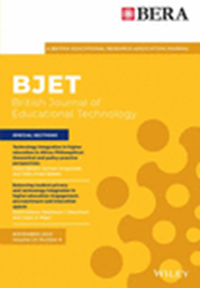Examining students' attitudes and intentions towards using ChatGPT in higher education
Abstract
The release of ChatGPT has sparked an immense academic debate regarding its potential advantages and drawbacks for students. Despite its significance, there is a lack of empirical research on students' attitudes and behavioural intentions towards the utilization of ChatGPT. To fill this gap, we employed the integrated AI acceptance-avoidance model (IAAAM) and used partial least squares structural equation modelling to test the research model by collecting data from 287 university students in the UAE. Our key findings indicate that factors such as performance expectancy and effort expectancy positively influence students' attitudes towards ChatGPT. Additionally, personal development concerns demonstrate a negative association with attitudes and intentions to use ChatGPT, while perceived threat demonstrates a non-significant negative association with both. The findings of this research contribute to the emerging body of literature on ChatGPT's usage both conceptually and empirically. It also offers practical insights for future technology developers, emphasizing the significance of adopting a balanced approach that carefully considers both the benefits and potential drawbacks linked to the utilization of ChatGPT.
Practitioner notes
What is already known about this topic
- ChatGPT represents a significant advancement in natural language processing and has gained immense popularity since its launch, with rapid acceptance and adoption across various sectors.
- In higher education, ChatGPT has seen substantial use among university students and teachers.
- Previous studies have predominantly focused on investigating the attitudes and behavioural intentions of managers in organizational contexts and academic staff towards technology use in universities.
What this paper adds
- This study addresses an empirical gap by focusing on students' behavioural intentions towards employing ChatGPT, offering a student-centric perspective.
- It draws upon established technology acceptance literature and employs the integrated AI acceptance-avoidance model (IAAAM) to explore factors shaping students' attitudes and intentions regarding ChatGPT utilization.
- By adopting a “net valence approach”, the study considers both positive and negative factors associated with ChatGPT use in higher education.
- The findings provide valuable insights for educators, students, and policymakers by presenting a balanced and holistic understanding of the multifaceted factors influencing students' attitudes and behavioural intentions.
Implications for practice and/or policy
- Educators can leverage the findings to better understand students' perspectives and design educational strategies that effectively integrate ChatGPT into learning processes.
- Students can utilize the insights to make informed decisions about incorporating ChatGPT into their academic activities.
- Policymakers can consider the implications of ChatGPT adoption in higher education and develop guidelines and regulations to ensure its responsible and ethical use.


 求助内容:
求助内容: 应助结果提醒方式:
应助结果提醒方式:


